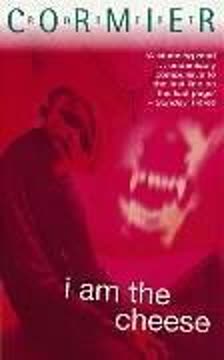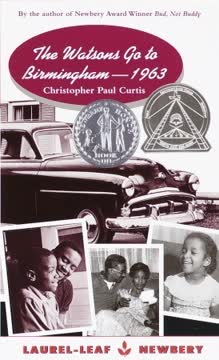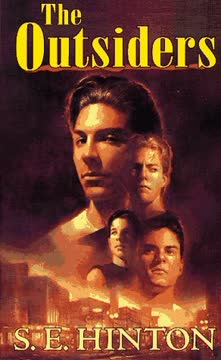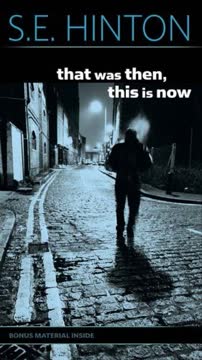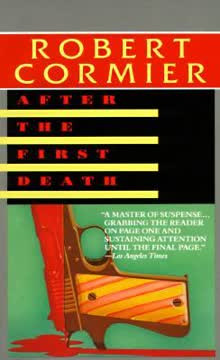Plot Summary
Pedaling Toward Rutterburg
Adam Farmer, a teenage boy, sets out on his old bicycle from Monument, Massachusetts, determined to reach Rutterburg, Vermont. He is driven by a need to deliver a package to his father, who he believes is in a hospital there. The journey is both literal and symbolic, filled with cold October air, physical discomfort, and a sense of urgency. Adam's thoughts are scattered, haunted by anxiety and fear, yet he is propelled by a deep, unspoken compulsion. The road ahead is uncertain, and Adam's mind is clouded by doubts about his own courage and the reality of his mission. As he pedals, he clings to memories of his family and the comfort of routine, but an undercurrent of dread and confusion follows him, hinting that this trip is more than it seems.
Interrogation and Memory Fragments
Interspersed with Adam's journey are transcripts of clinical interviews between Adam and a man named Brint. These sessions are tense, with Brint urging Adam to recall his earliest memories and piece together his past. Adam's recollections are fragmented and dreamlike, filled with impressions of his parents' voices, a sense of being watched, and a mysterious bus trip that changed everything. The sessions reveal Adam's deep mistrust, confusion, and fear, as well as his struggle to distinguish between real memories and implanted or imagined ones. The interrogations are both therapeutic and investigative, suggesting that Adam's story is being scrutinized for reasons beyond his own well-being.
The Farmer in the Dell
As Adam rides, he sings "The Farmer in the Dell," a song that once symbolized the warmth and unity of his family. The song is a recurring motif, representing innocence and belonging, but also isolation. Adam recalls moments of joy with his parents, especially his father's playful singing and his mother's lilac perfume. Yet, these memories are tinged with sadness, as Adam senses a change in his mother's demeanor and a growing distance within the family. The song becomes a way for Adam to comfort himself, but also a reminder of something lost, foreshadowing the unraveling of his identity and the truth about his family.
The Dog and the Woods
Adam's fear of dogs is rooted in a traumatic childhood memory: a day when he and his father, while walking to the library, were forced to flee into the woods to avoid a menacing dog. The incident is more than a simple scare; it is a clue to a life lived in fear and flight. Adam's father's sudden panic and evasive behavior suggest that they were running from more than just a dog. This memory, unearthed during Brint's sessions, becomes a metaphor for the family's constant vigilance and the hidden threats that have shaped Adam's life. The dog is both a literal and symbolic guardian of secrets.
Amy Hertz and the Numbers
Amy Hertz, Adam's girlfriend, is a vibrant, mischievous presence in his life. She invents "Numbers," elaborate pranks that bring Adam out of his shell and offer moments of laughter and connection. Their relationship is a rare source of happiness for Adam, who is otherwise withdrawn and anxious. Amy's curiosity and playfulness contrast with Adam's secrecy and fear, but her probing questions about his past inadvertently trigger his suspicions. When Amy's father's colleague from Rawlings, Pennsylvania, claims not to know the Farmer family, Adam's sense of reality begins to fracture, and he is forced to confront the possibility that his entire life is a fabrication.
Clues, Birth Certificates, and Doubt
Driven by Amy's questions and his own growing unease, Adam searches his father's desk and discovers two birth certificates with different dates for himself. This discovery, along with overheard phone calls and his mother's secretive behavior, deepens Adam's sense of alienation and mistrust. He becomes a spy in his own home, eavesdropping and searching for answers. The evidence points to a hidden past and a constructed identity, but Adam is paralyzed by fear and guilt, unable to confront his parents directly. The birth certificates become a symbol of his fractured self and the lies that underpin his existence.
The Secret Life Unveiled
In a climactic confrontation with his father, Adam learns that his real name is Paul Delmonte, and that the Farmer family is an invented identity. His father, once a journalist named Anthony Delmonte, had testified against powerful criminal organizations, forcing the family into the federal Witness Protection Program. Their lives have been a series of deceptions, relocations, and constant fear. The "gray man," Mr. Grey, is revealed as their government handler, orchestrating their new identities and monitoring their safety. Adam's entire sense of self is shattered, and he is left to grapple with the implications of being both a survivor and a ghost.
The Gray Man Appears
Mr. Grey, the so-called "gray man," is a constant but elusive presence in Adam's life. He is both protector and jailer, embodying the ambiguous morality of the system that has both saved and imprisoned Adam's family. Grey's visits are always secretive, his motives unclear, and his authority absolute. Adam's parents are both grateful and resentful toward him, recognizing that their safety comes at the cost of their autonomy and trust. Grey's role in the family's fate is ambiguous—he is a symbol of the faceless bureaucracy that controls their lives, and possibly the agent of their ultimate betrayal.
The Truth About Adam
As Adam's memories return, he realizes that his journey to Rutterburg is not real, but a mental construct—a coping mechanism for trauma. The people he encounters on the road are echoes of those in the institution where he is confined. The package for his father, the bike, and the quest itself are all part of a psychological loop, replayed endlessly as Adam tries to make sense of his loss and isolation. The truth is that Adam's parents are dead, killed in a targeted attack, and Adam himself is the last living link to the secrets his father uncovered. His identity is unstable, and his sense of self dissolves into confusion and despair.
The Family on the Run
The Delmonte family's existence is defined by constant vigilance, secrecy, and the threat of violence. Their relocation to Monument, Massachusetts, is just one of many attempts to escape those who would silence them. Adam's mother is consumed by anxiety, haunted by the "Never Knows"—the perpetual uncertainty of their safety. His father, stripped of his career and identity, struggles to maintain a semblance of normalcy. The family's love is real, but it is overshadowed by the knowledge that they are always one step away from discovery and destruction. Their story is one of survival, but also of profound loss.
The Emergency and the Escape
When Mr. Grey warns of a possible breach in their cover, the family is forced to flee once again, under the pretense of a weekend trip. Adam senses the tension and fear beneath his parents' attempts at normalcy. The journey north is filled with foreboding, as Adam becomes increasingly aware that this may be their last chance to escape. The family's unity is both a comfort and a source of pain, as they cling to each other in the face of impending doom. The emergency is not just a plot device, but the culmination of years of fear and uncertainty.
The Final Journey North
The family's escape takes them through familiar towns and landscapes, but the sense of safety is illusory. They sing together, share memories, and try to maintain hope, but the shadow of danger is ever-present. Adam's father recognizes that they are being followed, and the family's fate is sealed. The journey is both a literal flight from danger and a metaphorical passage from innocence to tragedy. The moments of connection and love are poignant, made all the more heartbreaking by the knowledge of what is to come.
The Crash and Aftermath
The family's car is ambushed on a remote road, and Adam witnesses the violent deaths of his parents. The attack is swift and brutal, leaving Adam physically and emotionally shattered. In the aftermath, he is taken by government agents, his fate uncertain. The trauma of the crash becomes the central wound around which Adam's fractured psyche revolves. His memories of the event are fragmented and surreal, replayed endlessly in his mind as he struggles to make sense of his loss and his own survival. The crash is both the literal end of his family and the symbolic death of his identity.
The Hospital and the Cycle
Adam awakens in a hospital or institution, where he is subjected to repeated interrogations and psychological tests. The staff and other patients are distorted reflections of people from his journey. Adam's sense of time and reality is warped; he is caught in a cycle of remembering and forgetting, of hope and despair. The authorities are less interested in his well-being than in extracting information about his father's testimony. Adam's journey to Rutterburg is revealed to be a delusion, a coping mechanism for unbearable trauma. The cycle repeats, with Adam forever pedaling toward a destination he can never reach.
The Cheese Stands Alone
In the end, Adam is left alone, his identity erased, his family gone, and his mind broken by grief and manipulation. The refrain from "The Farmer in the Dell"—"The cheese stands alone"—becomes the final, haunting image. Adam, or Paul Delmonte, is the cheese: isolated, observed, and ultimately discarded by the system that was supposed to protect him. His story is a tragedy of lost identity, failed protection, and the devastating cost of secrets. The novel closes with Adam trapped in his own mind, singing to himself, forever alone.
Characters
Adam Farmer / Paul Delmonte
Adam is the protagonist, a teenage boy whose journey is both physical and psychological. Raised as Adam Farmer, he later learns his true identity is Paul Delmonte, the son of a government witness. Adam is intelligent, sensitive, and deeply anxious, haunted by fears he cannot name. His relationships—with his parents, Amy, and even his interrogator—are marked by longing and mistrust. Adam's psychological fragmentation is the result of trauma, deception, and the loss of his family. His development is a tragic arc from innocence to despair, as he uncovers the truth about his past and is ultimately consumed by it. Adam's struggle to reconcile his memories and identity is the emotional core of the novel.
David Farmer / Anthony Delmonte
Adam's father is a former journalist who becomes a government witness after uncovering corruption. Forced into the Witness Protection Program, he assumes the identity of David Farmer. He is loving but burdened, trying to protect his family while grappling with guilt and regret. His relationship with Adam is complex—marked by affection, secrecy, and the weight of shared danger. He is both a hero and a victim, sacrificing his career and identity for the greater good, but unable to shield his family from the consequences. His eventual death is the catalyst for Adam's psychological collapse.
Louise Farmer / Louise Delmonte
Adam's mother is gentle, loving, and deeply affected by the family's ordeal. Her sadness and anxiety are ever-present, manifesting in rituals and the "Never Knows"—her term for the constant uncertainty of their lives. She is both a source of comfort and a symbol of the family's vulnerability. Her relationship with Adam is tender but strained by the secrets she must keep. Her defiance of Mr. Grey's rules reveals a hidden strength, but she is ultimately a casualty of the forces that destroy her family.
Amy Hertz
Amy is Adam's girlfriend, a lively and mischievous girl who brings light into his otherwise dark world. Her "Numbers" are acts of rebellion and creativity, offering Adam moments of happiness and connection. Amy's curiosity and directness challenge Adam, pushing him to question his reality. She represents the possibility of love and normalcy, but also the danger of exposure. Amy's presence in Adam's memories is both a comfort and a source of pain, as he realizes he can never truly share his life with her.
Brint
Brint is the man who conducts Adam's interviews in the institution. He is calm, methodical, and manipulative, presenting himself as a guide to Adam's memories but ultimately serving the interests of the authorities. Brint's true motives are ambiguous—he is both a therapist and an investigator, seeking information rather than healing. His relationship with Adam is fraught with mistrust, and his probing questions often lead Adam deeper into confusion and despair. Brint embodies the impersonal, bureaucratic forces that control Adam's fate.
Mr. Grey / Thompson / Personnel #2222
Mr. Grey, also known as Thompson or Personnel #2222, is the government official responsible for the Delmonte family's protection and surveillance. He is enigmatic, authoritative, and emotionally detached, representing the system's power over individual lives. Grey's interventions are both lifesaving and oppressive, and his true loyalties are uncertain. He is a symbol of the moral ambiguity and potential betrayal inherent in the machinery of state protection.
Whipper, Dobbie, and Lewis
These three boys appear as antagonists during Adam's journey, harassing and threatening him. In reality, they are likely patients or staff at the institution, their roles in Adam's delusion reflecting his feelings of vulnerability and persecution. They serve as reminders of the dangers and hostility Adam faces, both in the outside world and within the confines of his mind.
Dr. Dupont
Dr. Dupont is a staff member at the institution, characterized by his kindness and attempts to comfort Adam. He represents the well-meaning but ultimately ineffective efforts to help Adam recover. His presence is a small source of stability in Adam's otherwise chaotic world, but he is unable to offer true protection or resolution.
Arthur Haynes
Arthur is a large, sad man who watches Adam from the institution's upper floor. He is physically and emotionally trapped, mirroring Adam's own sense of imprisonment. Arthur's presence is both unsettling and pitiable, highlighting the theme of isolation and the longing for freedom.
Junior Varney
Junior is a local troublemaker who steals Adam's bike during his journey. He represents the obstacles and threats Adam faces, as well as the futility of his quest. Junior's confrontation with Adam is a test of will, but also a reminder of the arbitrary dangers that punctuate Adam's life.
Plot Devices
Dual Narrative Structure
The novel alternates between Adam's first-person account of his bicycle journey and the transcripts of his interviews with Brint. This dual structure creates suspense and gradually reveals the layers of Adam's reality. The journey is both literal and metaphorical, while the interrogations serve to probe and destabilize Adam's sense of self. The interplay between these narratives blurs the line between memory and delusion, drawing the reader into Adam's fractured consciousness.
Unreliable Narration
The story is told largely from Adam's point of view, but his memories are incomplete, distorted, and often contradictory. This unreliability heightens the sense of mystery and disorientation, forcing the reader to question what is real and what is imagined. The gradual revelation of Adam's true identity and circumstances is achieved through the piecing together of these unreliable fragments.
Symbolism and Motifs
The song "The Farmer in the Dell," the bicycle, the package, and the motif of the journey all serve as symbols of Adam's longing for family, identity, and safety. The cheese, standing alone at the end of the song, becomes a powerful metaphor for Adam's isolation and abandonment. These symbols are woven throughout the narrative, reinforcing the novel's themes of loss, identity, and the search for meaning.
Foreshadowing and Red Herrings
The novel is filled with clues—overheard conversations, mysterious documents, and ambiguous encounters—that foreshadow the truth about Adam's past. At the same time, red herrings and false leads keep both Adam and the reader in a state of uncertainty. The gradual unveiling of the family's secret is achieved through careful layering of information and misdirection.
Psychological Realism
The novel's depiction of Adam's psychological state is both realistic and harrowing. His trauma manifests in anxiety, dissociation, and obsessive repetition. The use of clinical interviews and institutional settings underscores the impact of psychological damage and the limitations of therapy. The narrative's focus on Adam's inner life creates a sense of intimacy and empathy, even as it reveals the depth of his suffering.
Analysis
"I Am the Cheese" is a masterful exploration of identity, trauma, and the devastating consequences of secrecy and institutional power. Through its innovative structure and psychological depth, the novel immerses the reader in Adam's fractured reality, blurring the boundaries between past and present, truth and delusion. The story is both a gripping mystery and a profound meditation on the cost of survival in a world where trust is impossible and protection comes at the price of autonomy and selfhood. Cormier's use of unreliable narration and symbolic motifs—especially the haunting refrain of "The Farmer in the Dell"—underscores the themes of isolation and loss. The novel critiques the impersonal machinery of government and the moral ambiguity of those who wield power, suggesting that even well-intentioned systems can become instruments of destruction. Ultimately, "I Am the Cheese" is a tragedy of a boy who, in seeking the truth about himself, discovers only emptiness and abandonment. The final image of Adam, alone and singing to himself, is a searing indictment of a society that fails to protect its most vulnerable, leaving the "cheese" to stand alone.
Last updated:
Review Summary
I Am the Cheese is a psychological thriller that captivates readers with its complex narrative structure and dark themes. Many praise Cormier's skillful storytelling, comparing it to works like "Shutter Island." The book explores identity, memory, and government conspiracy through a young protagonist's journey. While some found the ending unsatisfying or confusing, others appreciated its thought-provoking nature. The novel's pessimistic tone and challenging content sparked debates about its suitability for young readers, but it remains a powerful and memorable work for many.
Download PDF
Download EPUB
.epub digital book format is ideal for reading ebooks on phones, tablets, and e-readers.
